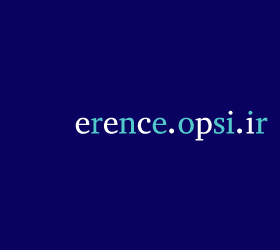Showing 5 results for nikkhah
Nahid Farkhari, Ahmad Moshaii, Maryam Nikkhah, Sara Abbasian,
year 20, Issue 0 (1-2014)
Abstract
In this paper, we have investigated the adsorption properties of different strands of a DNA to the colloidal nanoparticles. We measured the plasmonic spectrums of the nanoparticles under the presence of different oligonucleotids. It is shown that the quality of the adsorption of different strands of DNAs on the nanoparticles strongly depends on the sequence of the DNAs. Between the different bases of a DNA, the base (A) has the best and the base (G) has the worst attachment to the nanoparticles. It is also shown that with increment of the DNA concentration, the adsorption of the silver nanoparticles to the DNAs increases leading to a more protection of the nanoparticles against salt-induced aggregation.
Sara Abbasian, Ahmad Moshaii, Maryam Nikkhah, Nader Sobhkhiz Vayghan,
year 22, Issue 0 (2-2016)
Abstract
In this research, a random array of silver nanostructures had been grown with glancing angle deposition method on the surface of substrate. The deposition was done at 86o, 84o and 82o. The effects of incident vapor angle on the morphology, plasmonic properties and sensing sensitivity of deposited nanostructures were investigated. The results show that the size of nanoparticles grows with decreasing the angle of incident vapor. In addition decreasing of the incident vapor angle leads to the narrowing of the plasmonic peak and increasing of the sensitivity of fabricated silver nanostructures. At the end the sensitivity of 141nm/RIU was obtained for deposited nanostructures at 82o which is suitable for sensing applications.
Mohsen Nikkhah, Amirhossein Baradaran Ghasemi, Hamid Latifi,
year 25, Issue 0 (ICOP & ICPET 2019 2019)
Abstract
In this paper, we proceed with design and construction of a quasi-random laser with coherent feedback made of a metallic photonic crystal slab as a cavity and Rhodamine 6G solution as a gain medium. The photonic crystal slab consists of the triangular gold nano beads arranged in a hexagonal lattice using nano-sphere lithography. Spectral emission intensity as well as the spectral width as a function of pumping energy were measured experimentally. Moreover, the physics behind the functional behavior of the structure is investigated through finite-element method. The results show that there is a considerable amount of scattering across the ordered structure which is important in the laser performance.
Mohsen Nikkhah, Amir Hossein Baradaran Ghasemi, Hamid Latifi,
year 25, Issue 0 (ICOP & ICPET 2019 2019)
Abstract
: In this paper, we set to report on design and construction of a plasmonic laser made of a metallic photonic crystal slab. Rhodamine 6G solution has been used as a gain medium. The photonic crystal slab consists of gold triangular nano-beads which are arranged in a hexagonal lattice using nano-sphere lithography. A Q-switched Nd:YAG second harmonic laser with 12ns pulsed width and 5Hz pulse repetition rate is used to optically pump the plasmonic laser. Emission spectrum and the spectral width as a function of pumping energy are measured through a UV-Vis spectrometer. Moreover, the physics behind the functional behavior of the structure is investigated through finite-element method. Even though the size of the nano-beads are small, the results show that there is an absorption cross section peak inside the PL spectrum of the gain medium which can excite localized surface plasmon resonances in the nano-beads leading to laser action.
Abbas Shams, Marziyeh Mousazadeh, Maryam Nikkhah, Seyed Hassan Tavassoli,
year 27, Issue 2 (ICOP & ICPET 2021 2021)
Abstract
One of the most common diseases in the current era is cancer, among which lung cancer has the highest incidence and mortality. Early and non-invasive diagnosis of cancer can help prevent and treat it. In exhalation of people with lung cancer, volatile organic compounds are present, which are considered good biomarkers. Among the various Volatile Organic Compounds present in exhalation, Hexanal is the most abundant biomarker that shows itself incrementally in patients. In this study, with the synthesis of Molecularly Imprinted Polymer and using Raman spectroscopy, the qualitative study of hexane as a volatile organic compound for use in the diagnosis of lung cancer has been performed.






